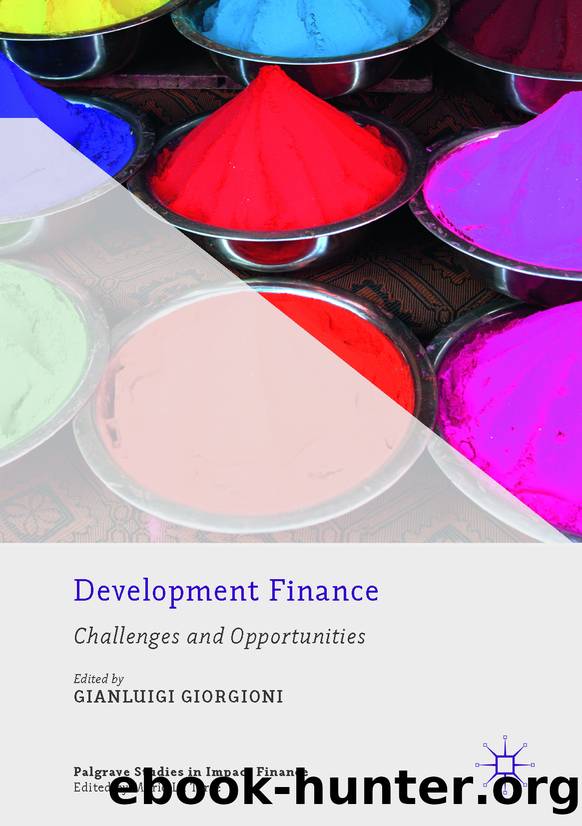Development Finance by Gianluigi Giorgioni

Author:Gianluigi Giorgioni
Language: eng
Format: epub
Publisher: Palgrave Macmillan UK, London
5.5 Putting It All Together and Moving Forward
5.5.1 Brain Drain, Brain Gain and the Intervening Effect of Remittances
As the literature reviewed in this chapter indicates, the effects of migration and remittances on migrant exporting developing countries are ambiguous. Remittances are generally welfare enhancing. At the same time, they do not necessarily reduce inequality and do not necessarily increase productivity and growth in the long run. Whether brain gain dominates over brain drain is not clear either. Given that skilled outmigration from developing countries dominates unskilled outmigration and there are theoretical predictions on positive implications of skilled migration and remittances by skilled migrants such as brain gain, information exchange and technology inflow, naturally the next question explored in the literature over the past decade has been whether skilled migrants are more likely to remit than unskilled migrants. The starting point of this debate is the proposition that if skilled migrants remit more than unskilled ones, this could offset some of the adverse implications of skilled as opposed to unskilled. With the use of the cross-country data on skilled migration, compiled by Docquier and Marfouk (2004), Faini (2007) tests the hypothesis that skilled migrants are more likely to remit less due to the greater propensity of skilled migrants to stay longer abroad and reunite with their families, and finds evidence in favour of this hypothesis. The negative effect of migrantsâ education on remittances is confirmed by Niimi et al. (2010), based on data from 82 countries. Moreover, in a different and more generalised context, Dimova and Wolff (2015) confirm the reunification dynamics explored by Faini (2007). While the focus of the majority of the migration-remittance literature is on the intensity and type of migration on remittances, Dimova and Wolff (2015) explore the alternative channel whereby remittances are primarily used to finance and stimulate further migration from the household and community of origin. After accounting for endogeneity, the authors find confirmation of the positive implications of remittances on chain migration in Bosnia and Herzegovina. They also find that migrants generally have superior human capital characteristics than non-migrants.
If this is indeed a dominant pattern of migration from and remittances to developing countries, it could have disastrous economic implications for these countries and respective communities. However, Bollard et al. (2011) argue that the relationship between skilled migration and remittances is much less dramatic and may even, on average, have positive development implications. Using microdata from surveys in 11 major destination countries, the authors find that while the evidence on the link between education of the migrant and his or her probability to remit is mixed, there is a strong positive relation between education and the amount of remittances, conditional on remitting. This line of analysis is still nascent; more research should explore the combined effect of migration and remittances at the microlevel.
Download
This site does not store any files on its server. We only index and link to content provided by other sites. Please contact the content providers to delete copyright contents if any and email us, we'll remove relevant links or contents immediately.
International Integration of the Brazilian Economy by Elias C. Grivoyannis(75150)
The Radium Girls by Kate Moore(11621)
Turbulence by E. J. Noyes(7702)
Nudge - Improving Decisions about Health, Wealth, and Happiness by Thaler Sunstein(7247)
The Black Swan by Nassim Nicholas Taleb(6771)
Rich Dad Poor Dad by Robert T. Kiyosaki(6182)
Pioneering Portfolio Management by David F. Swensen(6082)
Man-made Catastrophes and Risk Information Concealment by Dmitry Chernov & Didier Sornette(5653)
Zero to One by Peter Thiel(5494)
Secrecy World by Jake Bernstein(4389)
Millionaire: The Philanderer, Gambler, and Duelist Who Invented Modern Finance by Janet Gleeson(4101)
The Age of Surveillance Capitalism by Shoshana Zuboff(3990)
Skin in the Game by Nassim Nicholas Taleb(3971)
The Money Culture by Michael Lewis(3849)
Bullshit Jobs by David Graeber(3836)
Skin in the Game: Hidden Asymmetries in Daily Life by Nassim Nicholas Taleb(3726)
The Dhandho Investor by Mohnish Pabrai(3561)
The Wisdom of Finance by Mihir Desai(3526)
Blockchain Basics by Daniel Drescher(3331)
